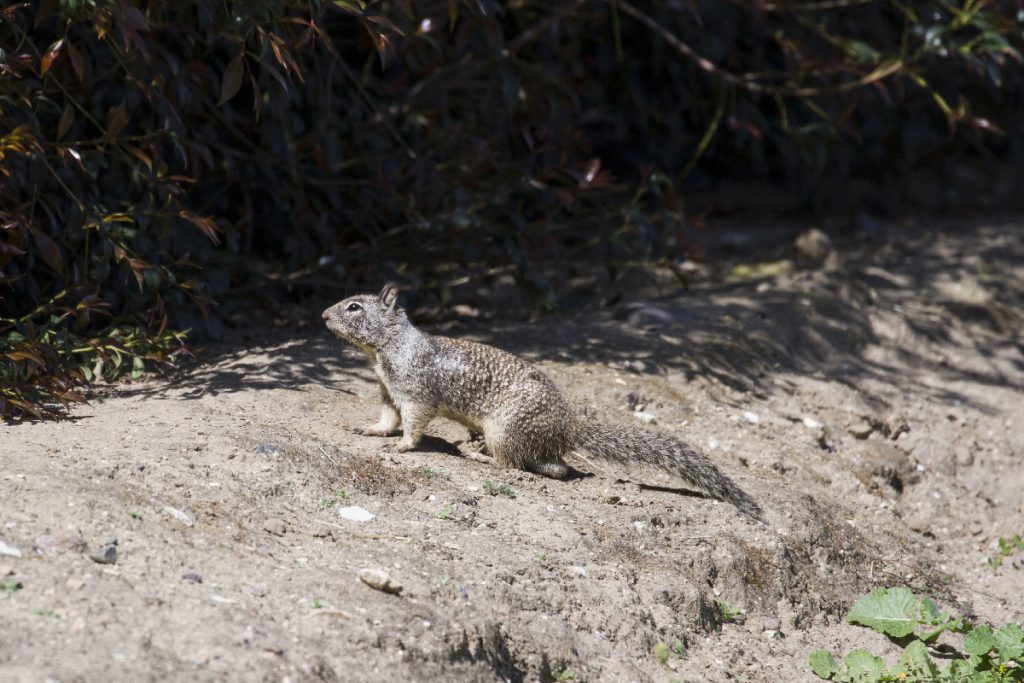
The name Otospermophilus is derived from the Greek words for ear (“Otos”), seed (“spermatos”), and love (“phileo”) – because it has large ears (for a squirrel) and loves to eat seeds!
FAMILY
Sciuridae, a rodent family that includes chipmunks, marmots, and groundhogs
RANGE
As far north as central Washington, most of western Oregon, most of California, and as far south as the Baja peninsula
Important Environmental Factors

Low to moderate levels of paved or compacted ground (less than 70%)

Less than 1,000 millimeters of rainfall per year

High variation in seasonal rainfall
Appearance
California ground squirrel is a grayish-brown squirrel with white spots and rings around its eyes. It can be distinguished from other ground squirrels by its bushy tail, which is also lined with white fur.
Behavior
The ground squirrel’s diet varies with the seasons. From late winter through spring, it feeds on green leaves and grasses, then switches to seeds, fruit, and the occasional insect during the summer and early fall. While foraging, ground squirrels often store seeds in their cheek pouches, then carry them to a safe area to eat or hide the seeds for later. Ground squirrels typically hibernate in the winter, but those that do not are only active on warm winter days, before noon.
Habitat
Ground squirrels are found from the coast to the mountains, and though they generally prefer areas with milder winters, they have also been observed at elevations over 10,000 feet. Ground squirrels can be found in many types of habitat, but avoids dense vegetation. They inhabit grasslands, pasture, coastal areas, and on rocky ridges and slopes with scattered trees. They are well-adapted to human landscapes and will burrow in orchards, agricultural fields, and along roadsides and fence lines.
Human Conflicts
California ground squirrel is a native species that plays an important role in our native ecosystems. It is a source of prey for birds and larger mammals, and many other species (including burrowing owls and tiger salamanders) also live in their burrows. However, because ground squirrels are good at occupying disturbed sites, they frequently encounters human structures and are sometimes considered a pest. Burrowing activity can damage sidewalks, railroads, levees, canals, sidewalks, and even the foundations of buildings. There are thus many efforts to control ground squirrels in certain environments, particularly using non-lethal methods (e.g. kill traps or poisonous baits), which can harm non-target wildlife.
Data source:
Species records for distribution model provided by iNaturalist
References:
- Smith et al. 2016. In Mammalian Species, 48(939), 91-108. [link]
- Quinn et al. 2017. Ground Squirrel Best Management Practices.